
Earthquake Science
Scope & Guideline
Pioneering Knowledge in Earthquake Dynamics
Introduction
Aims and Scopes
- Seismic Monitoring and Analysis:
The journal emphasizes the development and application of various seismic monitoring techniques and analytical methods to assess earthquake activity and its potential impacts. This includes advancements in seismic networks, data analysis, and interpretation of seismic signals. - Earthquake Forecasting and Risk Assessment:
Research aimed at predicting earthquake occurrences and assessing associated risks is a central theme. This includes the exploration of precursors, statistical models, and methodologies for evaluating seismic hazards in different regions. - Geophysical Studies and Structural Analysis:
The journal publishes studies on the geophysical properties of the Earth's crust, including seismic wave propagation, fault dynamics, and crustal structure. This research contributes to a deeper understanding of tectonic processes and earthquake mechanics. - Technological Innovations in Seismology:
Innovative technologies, such as machine learning applications and advanced computational methods, are explored to enhance seismic data analysis, modeling, and interpretation. This includes the integration of artificial intelligence in seismology. - Societal Impact and Public Awareness:
The journal addresses the social dimensions of earthquakes, including public perception, communication strategies, and the implications of seismic events on infrastructure and community resilience.
Trending and Emerging
- Machine Learning and AI in Seismology:
There is an increasing trend towards utilizing machine learning and artificial intelligence to enhance seismic data processing, earthquake detection, and risk assessment, indicating a significant shift towards integrating computational technologies. - Real-Time Monitoring and Rapid Response:
The focus on real-time seismic monitoring systems and rapid response strategies has gained momentum, reflecting an urgent need for timely data during seismic events to mitigate risks and improve emergency response. - Impact of Climate Change on Seismic Activity:
Emerging research is exploring the relationship between climate change and seismic activity, including how environmental factors may influence earthquake occurrences, which is becoming a critical area of study. - Public Engagement and Social Media Analysis:
The analysis of public opinion and communication strategies using social media data is increasingly relevant, highlighting the importance of societal perceptions and responses to seismic events. - Sustainable Infrastructure and Earthquake Resilience:
There is a growing emphasis on the integration of sustainability principles in earthquake preparedness and infrastructure design, reflecting an awareness of the need for resilience in the face of natural disasters.
Declining or Waning
- Historical Seismology:
Research focusing on historical earthquakes and their impacts is less frequently published, possibly indicating a shift toward more contemporary issues and real-time data analysis. - Basic Seismological Theory:
There is a noticeable decline in papers centered solely on fundamental theoretical aspects of seismology without direct applications or advancements, suggesting a trend towards applied research and practical methodologies. - Traditional Seismic Hazard Assessment Models:
The reliance on older seismic hazard assessment models has decreased, as newer, more sophisticated approaches gain traction. This reflects a broader move towards integrating modern technology and data analytics.
Similar Journals
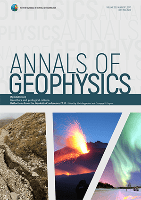
ANNALS OF GEOPHYSICS
Pioneering Insights into Earth and Planetary SciencesANNALS OF GEOPHYSICS is a prestigious open access journal dedicated to the advancement and dissemination of research in the field of geophysics. Published by the IST NAZIONALE DI GEOFISICA E VULCANOLOGIA in Italy, this journal has embraced open access since its inception in 1948, promoting wide accessibility to cutting-edge research. With an impressive Scopus ranking, placing it in the 52nd percentile within Earth and Planetary Sciences for the category of Geophysics, the journal serves as a vital platform for scholars, researchers, and practitioners seeking to explore the intricate phenomena of our planet. Covering a diverse range of topics in the geophysical community, the ANNALS OF GEOPHYSICS invites contributions that push the boundaries of our knowledge and understanding of geophysical processes, aiding in the development of innovative solutions to urgent environmental challenges. Published continuously from 2002 to 2024, the journal’s commitment to quality and rigor is reflected in its Q3 quartile ranking for 2023, making it a notable resource for the academic community.
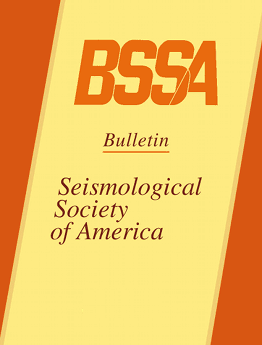
BULLETIN OF THE SEISMOLOGICAL SOCIETY OF AMERICA
Pioneering research in the realm of seismic science.BULLETIN OF THE SEISMOLOGICAL SOCIETY OF AMERICA is a premier journal published by the Seismological Society of America, dedicated to advancing research in the field of seismology and related disciplines. Since its inception in 1969, this journal has garnered significant recognition, evidenced by its impressive Q1 category rankings in both Geochemistry and Petrology, and Geophysics, alongside a solid standing within the Earth and Planetary Sciences Scopus rankings. The journal is esteemed for publishing high-quality, peer-reviewed articles that contribute to the understanding of seismic activities and their implications on a global scale. With a commitment to facilitating the dissemination of critical findings, it serves as an essential resource for researchers, professionals, and students alike who are engaged in the dynamic and vital study of the Earth’s processes. While the journal is not Open Access, it continues to provide vital insights and methodologies that shape the future of geophysical research.
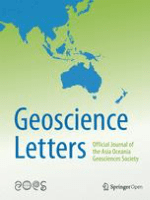
Geoscience Letters
Fostering Collaboration for a Better PlanetGeoscience Letters, published by Springer, is a prominent open-access journal in the field of Earth and Planetary Sciences, recognized for its dedication to advancing knowledge and research in this vital area of study. With a reported impact factor that reflects its esteemed position—ranking in the Q1 quartile of Earth and Planetary Sciences, particularly as the journal ranks #48 out of 195 in the general category according to Scopus—the journal serves as a vital resource for researchers, professionals, and students. Since its inception in 2014, Geoscience Letters has facilitated the dissemination of high-quality research and critical insights, aiming to bridge the gap between scientific discovery and societal needs. Its commitment to open access ensures that the latest findings are readily available to a global audience, thus enhancing collaboration and innovation within the geosciences community.
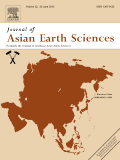
JOURNAL OF ASIAN EARTH SCIENCES
Unveiling the Secrets Beneath Asia's Diverse TerrainJOURNAL OF ASIAN EARTH SCIENCES, published by Pergamon-Elsevier Science Ltd, is a premier international journal dedicated to advancing the understanding of Earth Sciences, particularly within the vibrant and diverse geological landscapes of Asia. With an esteemed Impact Factor reflective of its robust scholarship, the journal is currently categorized in the Q1 quartile for both Earth-Surface Processes and Geology, highlighting its significant contribution to these fields. Researchers can access cutting-edge research spanning geophysical studies, geological formations, and environmental changes via the journal’s Open Access model, ensuring a broad dissemination of knowledge. As the journal converges its focus from 1997 to 2024, it continues to serve as a critical platform for scholars, professionals, and students aiming to explore the unique challenges and opportunities present in Asian Earth sciences. Its commendable rankings of 28th out of 179 in Earth-Surface Processes and 52nd out of 321 in Geology, demonstrate its influence and relevance in the academic community.

Bulletin of Earthquake Engineering
Connecting research and practice in earthquake engineering.The Bulletin of Earthquake Engineering is a premier journal published by Springer, dedicated to the field of earthquake engineering and its related disciplines. Established in 2003, this esteemed journal has evolved into a critical platform for disseminating cutting-edge research in Building and Construction, Civil and Structural Engineering, Geophysics, and Geotechnical Engineering and Engineering Geology, earning a distinguished position in the Q1 quartile across these categories. With an impressive ranking in Scopus, notably a rank of #8 in Earth and Planetary Sciences for Geophysics, the journal addresses urgent challenges in the mitigation of seismic risks and the enhancement of structural resilience. Researchers and practitioners benefit from a wealth of peer-reviewed articles, insights, and methodologies relevant to modern engineering practices aimed at improving safety and sustainability in earthquake-prone regions. The Bulletin of Earthquake Engineering embodies a commitment to advancing knowledge and practice in earthquake resilience, making it an invaluable resource for academics, industry professionals, and rising scholars alike.
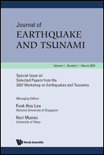
Journal of Earthquake and Tsunami
Navigating the complexities of seismic activity and ocean waves.Welcome to the Journal of Earthquake and Tsunami, a premier scholarly publication dedicated to advancing the field of geophysical research, with a particular focus on seismic activity and tsunami phenomena. Published by World Scientific Publishing Co Pte Ltd, this journal provides a vibrant platform for researchers and practitioners alike to share their findings and innovations, contributing to the global understanding of these critical natural events. With an impact factor that reflects its relevance, the journal is categorized in Q3 quartiles for 2023 in areas including Geophysics, Geotechnical Engineering, and Oceanography, indicating a solid standing in the scientific community. It is indexed within Scopus, ranking in the upper half of its categories, which further establishes its importance as a resource for students and professionals seeking to stay informed about the latest developments. Although the journal operates under a traditional access model, its commitment to fostering scholarly discourse remains unwavering. Founded in 2008 and set to converge its offerings until 2024, the Journal of Earthquake and Tsunami continues to be an invaluable resource for anyone dedicated to understanding the dynamic and often dangerous interactions of our planet’s geological features.
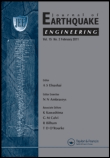
JOURNAL OF EARTHQUAKE ENGINEERING
Leading the way in earthquake resilience and safety.JOURNAL OF EARTHQUAKE ENGINEERING, published by TAYLOR & FRANCIS LTD, stands as a pivotal resource in the fields of Building and Construction, Civil and Structural Engineering, and Geotechnical Engineering. With an impressive Q1 ranking in multiple categories for 2023, this journal is instrumental for researchers, professionals, and students committed to advancing knowledge in earthquake engineering and its practical applications. As a platform that spans the years from 1997 to 2024, it highlights significant contributions to safety, risk, reliability, and quality in engineering practices. While the journal operates on a subscription basis, its highly regarded articles, bolstered by robust Scopus rankings—such as rank #46 in Building and Construction—underscore its credibility and influence in shaping standards and methodologies within the discipline. Promoting innovative and evidence-based approaches, the JOURNAL OF EARTHQUAKE ENGINEERING is essential reading for anyone engaged in the science and technology of earthquake-resistant structures.

EARTHQUAKE SPECTRA
Leading the charge in earthquake resilience and engineering.EARTHQUAKE SPECTRA, published by SAGE PUBLICATIONS INC, is a premier journal dedicated to the field of geophysics, geotechnical engineering, and engineering geology, with a specific focus on seismic phenomena. Issued both in print (ISSN: 8755-2930) and electronically (E-ISSN: 1944-8201), the journal has maintained its position as a leading source of high-quality research since its inception in 1984. Recognized in the 2023 Category Quartiles as Q1 in both geophysics and geotechnical engineering, it is highly regarded in the academic community, ranking 11 out of 165 in its field, placing it in the 93rd percentile of Earth and Planetary Sciences, and 30 out of 229 for geotechnical engineering with an 87th percentile standing. With a commitment to advancing knowledge and practice in earthquake engineering, EARTHQUAKE SPECTRA publishes original research, case studies, and critical reviews that inform the design and construction practices related to seismic events. Although it does not currently offer open access, the journal's impact on the discipline remains significant, making it an essential resource for researchers, professionals, and students dedicated to understanding and mitigating the effects of earthquakes.

JOURNAL OF SEISMIC EXPLORATION
Exploring the Depths of Earth with PrecisionJOURNAL OF SEISMIC EXPLORATION, published by GEOPHYSICAL PRESS, is an esteemed academic journal specializing in the intricate fields of geochemistry and geophysics, focusing on the seismic methods of subsurface exploration. Established in 1992 and operational through 2023, this journal provides a critical platform for researchers, professionals, and students to disseminate high-quality findings related to seismic technologies, exploration techniques, and the interpretation of geophysical data. Although it currently holds a Q4 quartile ranking in both geochemistry and geophysics, the journal remains committed to fostering innovative research that advances the understanding of Earth processes. While not available in an open-access format, the journal offers professional insights and calculates its impact through its dedicated readership and contributions, thereby enhancing the ongoing dialogue in the Earth sciences community. Located in Castelnau-le-Lez, France, this journal is an essential resource for those seeking to deepen their expertise in seismic exploration and its applications.
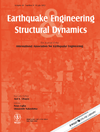
EARTHQUAKE ENGINEERING & STRUCTURAL DYNAMICS
Shaping resilient structures for a dynamic world.EARTHQUAKE ENGINEERING & STRUCTURAL DYNAMICS, published by Wiley, is a leading journal recognized for its significant contributions to the domains of civil and structural engineering, as well as geotechnical engineering and engineering geology. With an impressive Q1 ranking in multiple categories, including Civil and Structural Engineering, and an esteemed Scopus ranking placing it in the 82nd percentile, the journal serves as a premier platform for disseminating pioneering research and innovative methodologies related to earthquake engineering and dynamic structural analysis. Established in 1972, this journal boasts a comprehensive coverage of topics from theoretical developments to practical applications, making it an essential resource for researchers, industry professionals, and students eager to expand their understanding of seismic safety and structural resilience. Though it does not offer open access, the journal continues to be a cornerstone for scholarly communication within the earthquake engineering community, advancing knowledge that shapes better engineering practices worldwide.